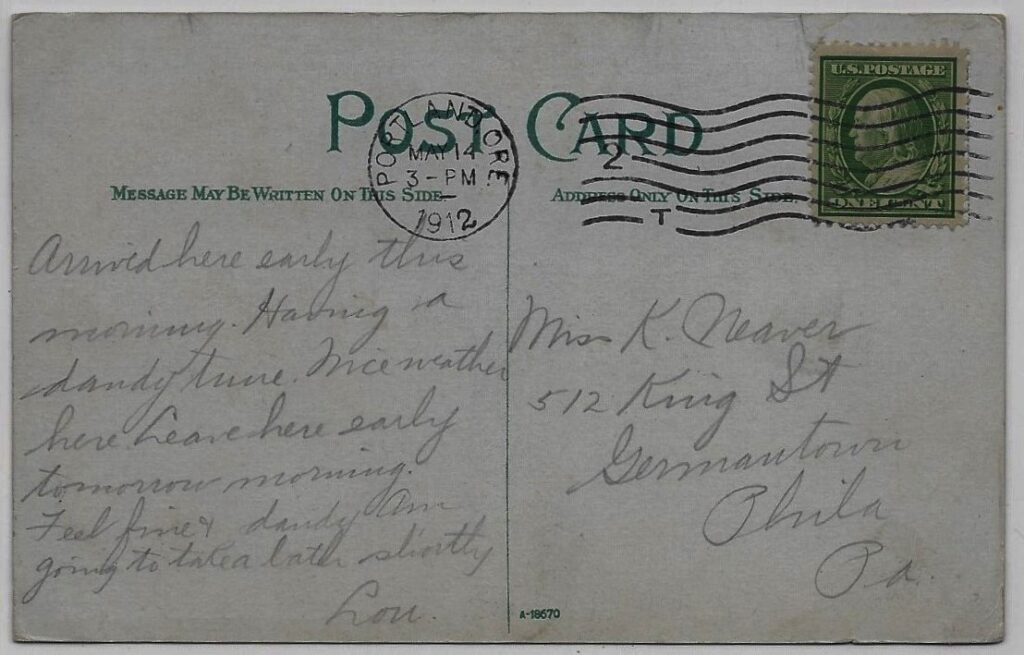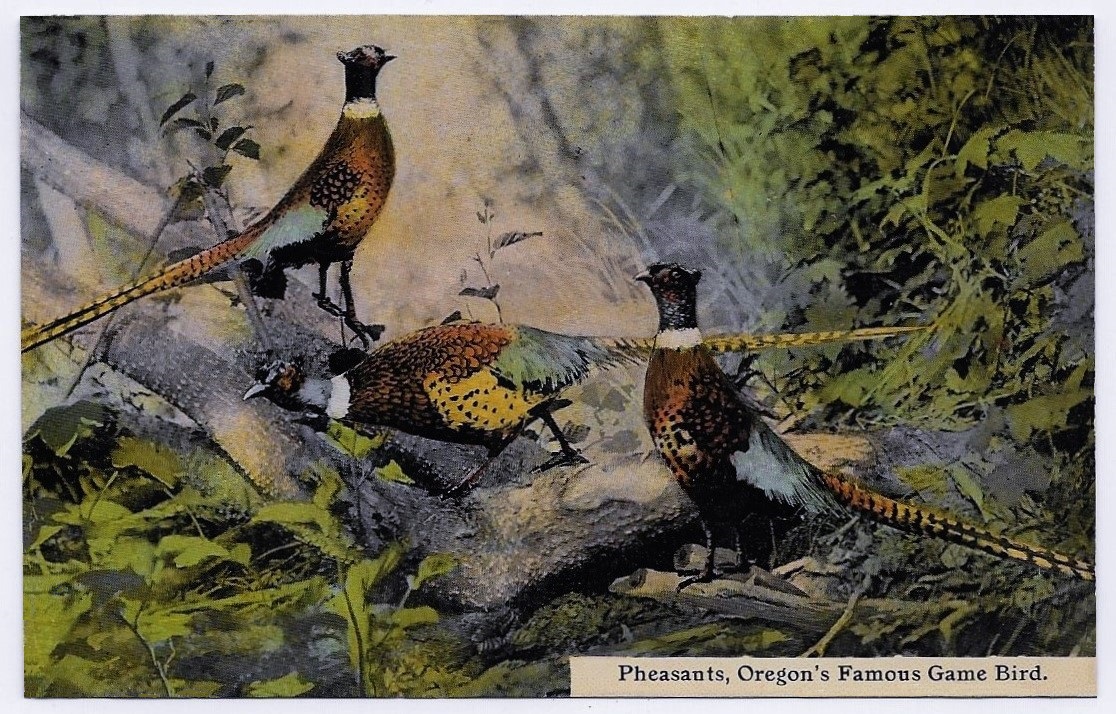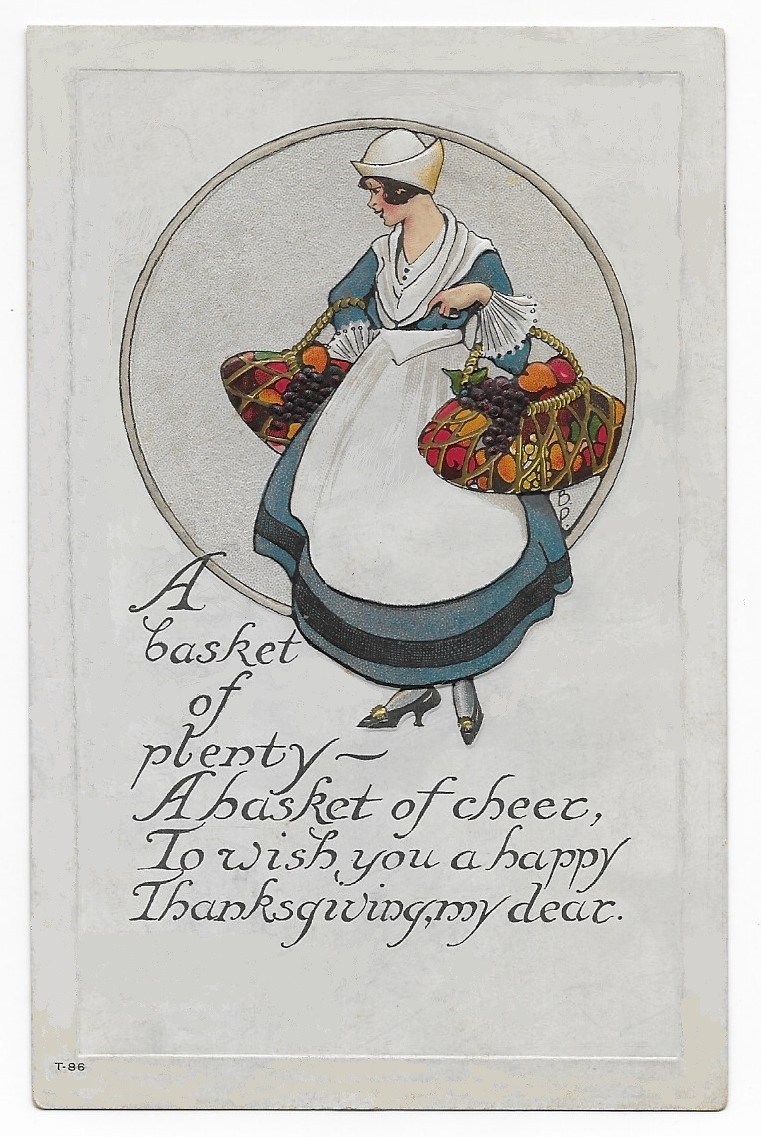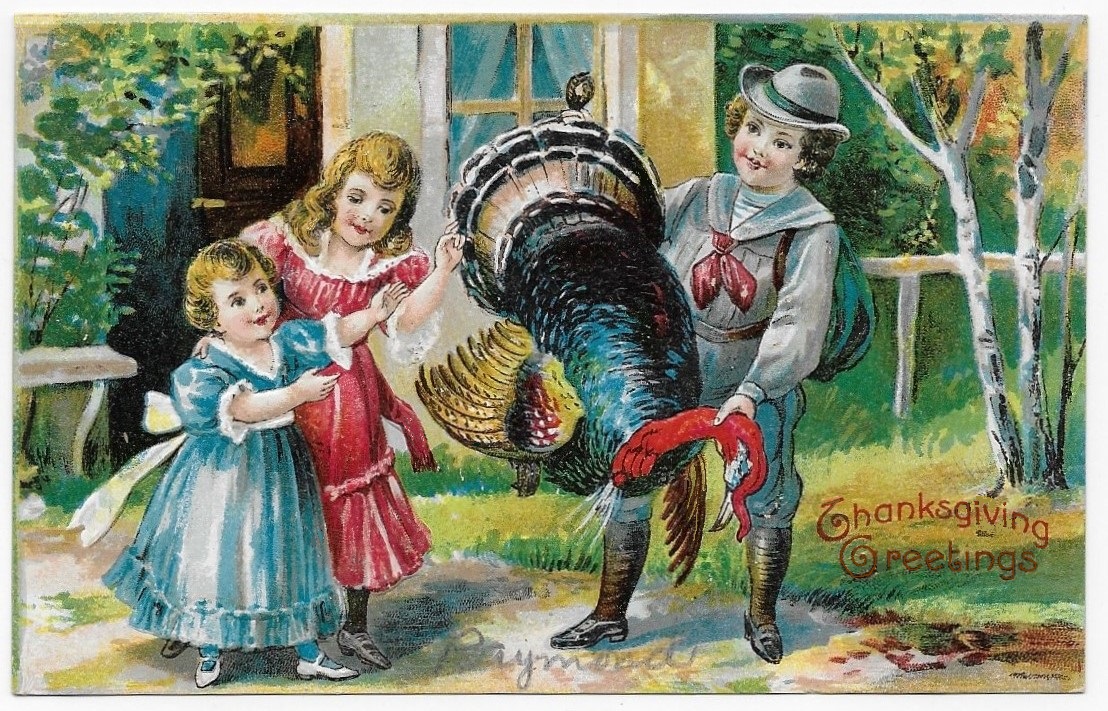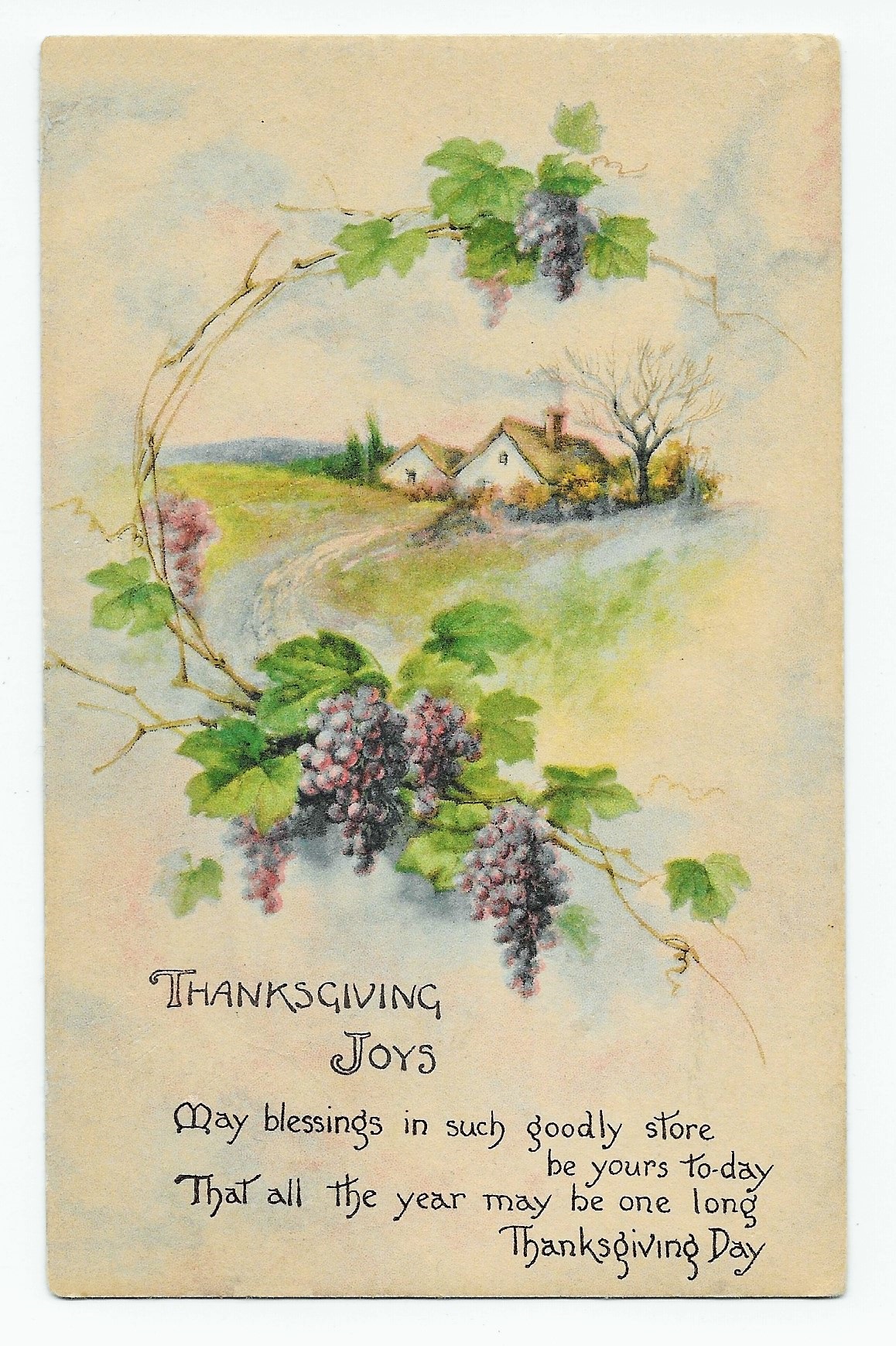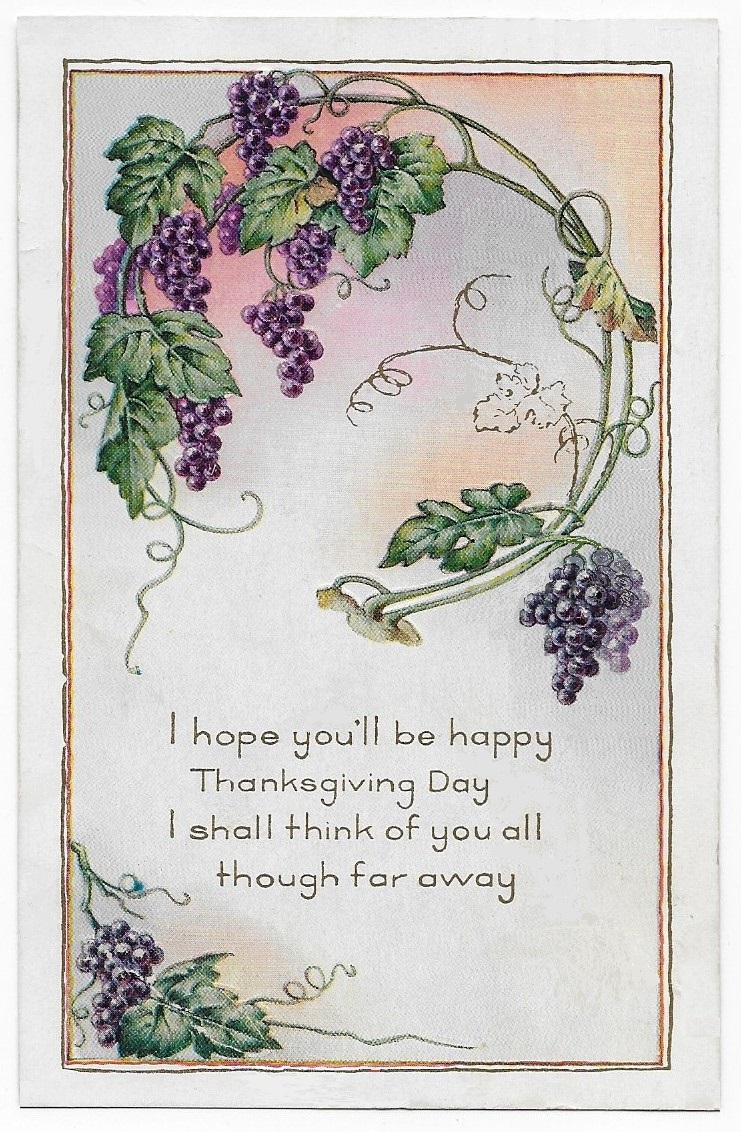Miss K. Weaver lived in Germantown – an independent borough established by English Quakers and German Anabaptists (1683) that became a neighborhood of northwest Philadelphia in 1854.
(Germantown preserves a remarkable number of colonial buildings and historic sites – it is worth a visit.)
https://en.wikipedia.org/wiki/Germantown,_Philadelphia
We have seen other postcard stories in which “Germantown” remains a part of the postcard address.
In May of 1912, Miss Weaver received a postcard from Lou.
Lou mailed the postcard from Portland, the city at the confluence of the Willamette and Columbia Rivers in Multnomah County in northwest Oregon.
https://en.wikipedia.org/wiki/Portland,_Oregon
Because I have other postcards addressed to “Katherine Weaver” at a similar address, I believe that this is Katherine Weaver.
+ + + + + +
The face of the postcard is a hand-colored photograph of pheasants.
A printed title identifies, “Oregon’s Famous Game Bird” – which surprised me as the pheasant is ubiquitous in the eastern US and I had not associated the bird with Oregon.
The common pheasant, or “ring-necked pheasant”, is a native of the mountainous regions around the Black Sea, but has become “naturalized” throughout much of Europe and the US where it was introduced for hunting.
It is the most-hunted game bird in the world.
https://en.wikipedia.org/wiki/Pheasant
I believe that this is a photograph of a museum taxidermy display; the photograph does not strike me as having been taken in the wild.
These birds look stuffed and posed, as though in a Natural History display.
There is no attribution of the image anywhere on the postcard.
+ + + + + +
On the reverse, Lou reports, “Arrived here early this morning,
Although Lou is “having a dandy time” and enjoying “nice weather here”, the visit will not be a long one.
Lou will “Leave here early tomorrow morning”.
Today, however, Lou is feeling “fine and dandy” and is “going to take a bath shortly.”
The message does not offer any clues about the length or the purpose of the trip.
Miss Weaver preserved the scene of pheasants in very good condition throughout her life.
